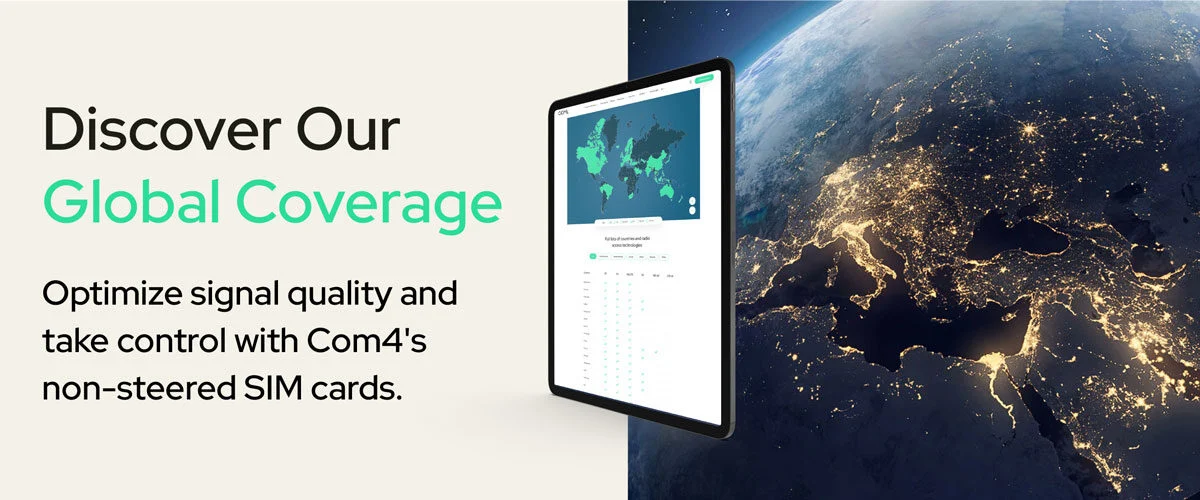The market growth reflects this shift. A report from Mordor Intelligence shows that the Industrial IoT market will rise from USD 154.14 billion in 2025 to USD 676.20 billion by 2030. This growth, with a CAGR of 34.4 percent, highlights how quickly industries are adopting IoT. Businesses that use it are not only improving daily operations but also building smarter and more resilient systems for the future.
What is IoT in industrial automation?
Industrial IoT (IIoT) is the use of connected devices, sensors, and secure communication systems in factories and plants. These tools create a network where machines and systems share data in real time. This flow of information lets industries monitor performance, fix issues early, and automate tasks. Unlike older systems, IIoT connects production, logistics, quality checks, and supply chains in one network.
The benefits are clear. Sensors track temperature, vibration, energy use, and output on every machine. The data is analysed instantly to guide better decisions. For example, if a motor starts to overheat, the system can slow it down and alert a technician before it fails. This reduces downtime, lowers costs, and keeps workflows efficient. IIoT can start small with one machine and grow to connect thousands across many sites. This makes it useful in industries such as manufacturing, energy, agriculture, and logistics.
 How Does IoT Impact Industrial Automation?
How Does IoT Impact Industrial Automation?
IoT is reshaping industrial automation by enabling machines and systems to talk to each other. Real-time data shows operators how equipment is performing, helping them identify and fix problems before they become serious.
With IoT, repetitive tasks are automated, reducing the need for manual effort. Factories experience less downtime and higher product quality. Logistics teams gain better control over shipments. Energy providers can optimise resource use. Combined with artificial intelligence and machine learning, IoT makes automation predictive and intelligent, not just reactive.
5 Benefits of Using IoT in Industrial Automation
IoT delivers clear advantages to industries seeking efficiency, safety, and better decision-making. By connecting systems and people, companies gain deeper insights and greater control.
Improved Operational Efficiency
IoT connects every stage of production. Sensors track performance, energy use, and workflow delays. Managers can detect problems early and correct them before they affect output. Automating repetitive tasks reduces mistakes and keeps operations smooth. The result is higher productivity with fewer disruptions.
Predictive Maintenance
IoT makes predictive maintenance possible. Sensors track machine health, measuring factors like vibration, pressure, and temperature. Maintenance teams act only when necessary, reducing costs and extending equipment life. This approach prevents unexpected breakdowns that could stop production.
Enhanced Safety and Compliance
Workplace safety improves with IoT monitoring. Sensors detect hazards such as toxic gases, extreme heat, or unsafe vibration levels. Systems trigger instant alerts, protecting workers from risks. At the same time, IoT helps industries comply with safety regulations by keeping detailed records.
Cost Reduction
Automation and monitoring with IoT save energy, materials, and labour. Machines operate only when needed, reducing waste. Healthy equipment requires fewer repairs, and predictive alerts prevent costly failures. Over time, these savings create significant cost advantages for businesses.
Better Decision-Making
IoT data supports quick, accurate decisions. Dashboards show machine health, resource use, and production trends. Managers can adapt supply chains, shift workloads, and adjust energy use in real time. This agility makes businesses more competitive in fast-changing markets.
 How Does Industrial Automation in IoT Work?
How Does Industrial Automation in IoT Work?
Industrial IoT works by connecting devices that collect, share, and act on data. This process ensures continuous improvement in operations.
Step 1: Data Collection
Sensors installed on machines and systems record data such as temperature, speed, and energy use. This flow of information creates a clear picture of daily performance.
Step 2: Data Transmission
The collected data is transmitted using secure networks. Companies rely on cellular, Wi-Fi, or global IoT SIM cards. In remote areas, satellite solutions keep connections reliable.
Step 3: Data Processing
Processing takes place at the edge or in the cloud. Edge computing handles information locally for faster response. Cloud computing combines data from multiple sites for detailed analysis and planning.
Step 4: Automation and Control
The processed data drives actions. Machines adjust speed or shut down to prevent damage. At the same time, operators receive alerts and recommendations for further action.
Step 5: Continuous Optimisation
The system learns over time. By analysing past data, IoT platforms suggest ways to cut waste, optimise workflows, and avoid failures. This creates a cycle of ongoing improvement.
What are the Types of Industrial Automation?
Industrial automation comes in several types. Each one offers different levels of flexibility and control.
Fixed Automation
Fixed automation is used for high-volume, repetitive production. Dedicated machines perform specific tasks efficiently. Car manufacturing lines are a common example. These systems are reliable but not flexible when products change.
Programmable Automation
Programmable automation allows reprogramming of equipment for different tasks. It is useful in batch production where the same machines handle multiple products. Chemical plants often use this type to adjust production settings. While slower to reconfigure, it offers greater flexibility than fixed systems.
Flexible Automation
Flexible automation builds on programmable systems with faster changeovers. IoT integration allows machines to switch between tasks quickly. A single line can handle varied products with minimal delay. This is ideal for industries that require product customisation.
Integrated Automation
Integrated automation connects all systems through IoT. Production, logistics, and quality control work together as one. Manual work decreases, and data flows smoothly across the operation. This approach forms the basis of fully smart factories.
Key IoT Technologies in Industrial Settings
IoT depends on advanced technologies that let machines and systems work as one. These technologies form the foundation of industrial automation.
Sensors and Actuators
Sensors gather data on machine health, energy use, and environmental conditions. Actuators respond by adjusting equipment. Together, they form a feedback loop of monitoring and control. Explore IoT sensors and use cases.
Edge Computing and Cloud Integration
Edge computing processes data locally for fast decisions. Cloud integration stores and analyses data across sites, providing broader insights. The combination gives industries both speed and depth.
Connectivity Protocols (5G, LPWAN, etc.)
Reliable communication is the backbone of IoT. Global IoT coverage with 5G, LTE-M, and NB-IoT ensures constant connectivity. Low-power networks such as LPWAN extend sensor life, making them practical for long-term use.
AI/ML Integration in IoT Systems
Artificial intelligence and machine learning transform IoT data into smart strategies. They identify trends, predict failures, and optimise schedules. With AI, industries move beyond simple monitoring to intelligent automation. Learn more about AIoT.
Use Cases of IoT in Industrial Automation
IoT is transforming industrial automation with practical applications across many industries. These examples show how companies are already using connected systems to improve efficiency and productivity.
- Smart Manufacturing: Factories use IoT to monitor production lines in real time and detect problems before they cause delays. By automating tasks and reducing waste, businesses achieve higher output and consistent product quality.
- Supply Chain Visibility: Companies in logistics and transportation rely on IoT sensors to track goods during storage and transit. Real-time updates prevent losses, reduce delays, and build stronger customer trust.
- Energy Management: IoT systems monitor electricity, gas, and water use. Automated controls reduce waste and cut costs. See our energy sector solutions.
- Agricultural Automation: Farmers use IoT to monitor soil and crops. Data-driven irrigation increases yield and saves resources.
- Smart Cities: Cities are adopting IoT to manage traffic lights, waste collection, and street lighting. These connected systems cut congestion, save energy, and improve public services. IoT solutions for smart cities are helping urban areas operate more efficiently while improving daily life for citizens.
- Retail Operations: Retailers use IoT to gain better control of inventory and supply chains. Smart shelves and connected systems track stock levels and help avoid shortages or excess storage. This is why IoT is playing a growing role in retail, supporting faster restocking and better customer experiences.
- Micromobility: Shared scooters, bikes, and other small vehicles depend on IoT for smooth operation. Operators use connected systems to track location, usage, and battery levels. By applying IoT in micromobility, service providers improve fleet management and deliver a better experience for riders.
Challenges in Adopting IoT for Industrial Automation
Adopting IoT offers huge benefits, but it also presents challenges. These must be addressed for long-term success.
- High Initial Costs: Deploying IoT systems requires investment in devices, connectivity, and training. While the long-term return is strong, many businesses hesitate because of the upfront expense.
- Cybersecurity Risks: The more devices that are connected, the greater the risk of cyber-attacks. Hackers can target weak points in the system to steal data or disrupt operations. Strong security tools, such as add-on products, are vital to protect systems.
- Integration with Legacy Systems: Many factories still depend on older equipment that was never designed for IoT. Connecting these machines to modern systems can be complex and costly.
- Data Management: IoT produces massive volumes of data every day. Without the right storage and analysis tools, this data becomes overwhelming instead of useful.
- Skill Gap: Running IoT platforms requires people who can manage devices, analyse data, and secure networks. Many industries face a shortage of skilled workers in these areas.
- Scalability Issues: Starting with a small IoT project is simple, but expanding it across multiple sites is harder. Larger deployments need stronger connectivity, reliable SIM solutions, and central management platforms.
IoT is transforming industrial automation from the ground up. It improves efficiency, reduces downtime, increases safety, and empowers better decision-making. The growth of IIoT proves its importance across industries.
Companies that act now will lead their sectors in the coming years. Those that delay risk falling behind. Embracing IoT today is not just about staying current. It is about securing long-term growth and staying competitive in a digital-first world.
FAQs on IoT in Industrial Automation
What is the difference between IoT and industrial IoT(IIoT)?
IoT covers devices in homes, healthcare, and consumer electronics. Industrial IoT is designed for manufacturing, logistics, energy, and other industries where efficiency and automation matter most.
What is the scope of industrial IoT?
The scope includes predictive maintenance, smart factories, supply chain visibility, energy management, and workplace safety. It extends across industries from agriculture to smart cities.
What are the four pillars of the industrial IoT?
The four pillars are connectivity, data, analytics, and automation. Together, they enable seamless operations and smarter decision-making.
What is the architecture of industrial IoT?
The architecture has four layers: perception (sensors), network (connectivity), processing (edge and cloud), and application (user interfaces and decision-making).
Which industries benefit most from Industrial IIoT?
Industries such as manufacturing, logistics, energy, agriculture, retail, and smart cities gain the most from IIoT. Each sector applies IIoT differently, but all benefit from reduced downtime, lower costs, and smarter decision-making.







